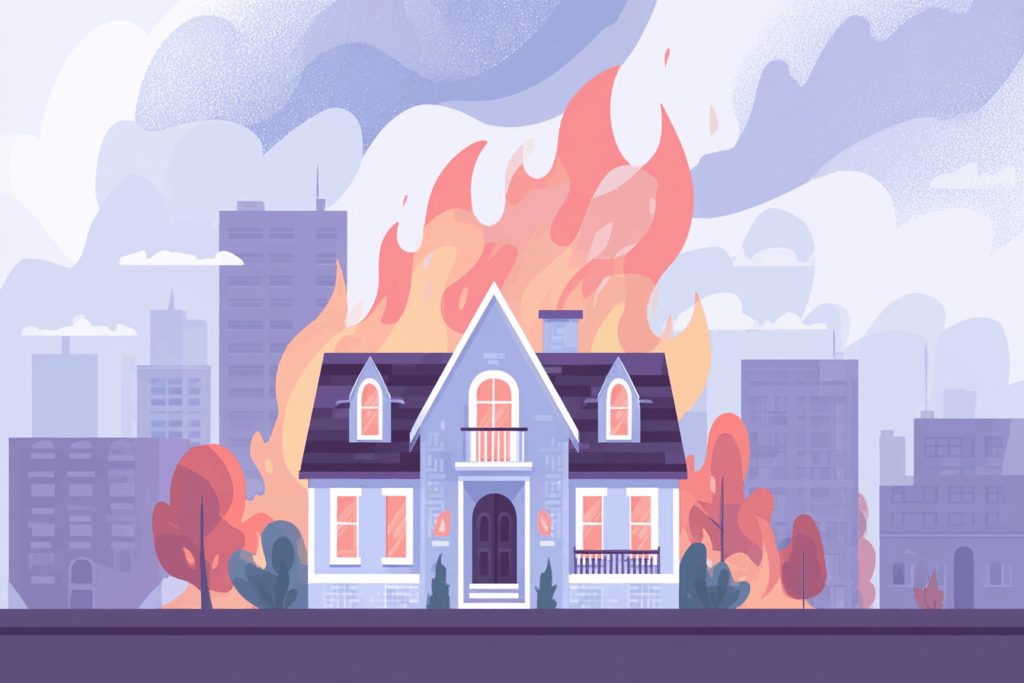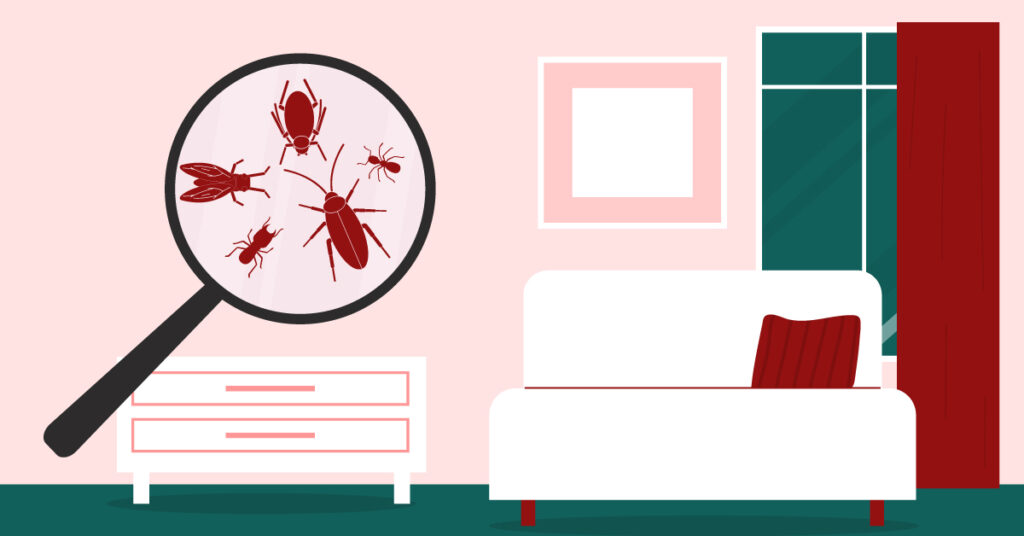Fire can destroy a home in minutes. Most house fires can be prevented. However, if they do occur, early detection and prompt action can save lives. Boost your family’s safety by combining fire safety with your home security plan. This approach ensures that prevention, detection, and emergency response work together as one system.
Why Fire Safety Should Be Part of Your Security Plan
A home security plan often focuses on burglary prevention, but fire is a greater threat in terms of fatalities and property damage. According to the National Fire Protection Association (NFPA), U.S. fire departments respond to over 340,000 home structure fires each year. These fires cause thousands of deaths, tens of thousands of injuries, and billions in property loss. Unlike break-ins, fires can spread quickly and become life-threatening in under three minutes. A comprehensive home security plan must address both human threats and environmental hazards, such as fire. Integrating the two saves time, simplifies monitoring, and ensures faster emergency response.
Step 1: Identify Fire Risks in Your Home
The first step is to know where fires are most likely to start. Common fire hazards include:
- Kitchen appliances left unattended during cooking
- Overloaded electrical outlets or damaged cords
- Space heaters located too close to flammable objects
- Unattended candles or smoking materials
- Faulty fireplaces, chimneys, or heating systems
- Flammable liquids stored improperly in garages or basements
Inspect your home room by room. Note where hazards exist and address them immediately.
Here are some tips:
- Replace worn extension cords.
- Install stove shutoff devices.
- Move space heaters away from curtains.
Step 2: Install and Maintain Fire Detection Devices
Early detection is your best chance of survival. NFPA research shows that working smoke alarms reduce the risk of dying in a home fire by more than 50%. To maximize coverage:
- Install smoke alarms in every bedroom, outside each sleeping area, and on every level of your home.
- Use ionization and photoelectric alarms together, or pick combination units. This helps detect both fast flames and smoldering fires better.
- Test alarms every month. Replace batteries at least once a year, unless you have sealed 10-year battery models.
- Replace smoke alarms every 10 years or according to the manufacturer’s recommendations
Besides smoke alarms, consider using heat detectors in areas such as kitchens, garages, or attics. These areas often have false alarms. They react to temperature spikes, not smoke. This reduces nuisance alerts while still detecting fires early.
Step 3: Integrate Fire Detection with Your Home Security System

Modern security systems allow you to connect fire detection devices to your central monitoring hub. When a smoke or heat detector is triggered:
- The system sends an immediate alert to your smartphone
- The monitoring center can notify the fire department within seconds
- Interior sirens and voice alerts can guide occupants to safety
Many systems let you connect carbon monoxide detectors, gas leak sensors, and water leak sensors. This creates a complete setup for monitoring environmental hazards. Integration means you don’t rely solely on hearing an alarm—you get real-time data, even when you’re away from home.
Step 4: Automate Fire Safety Responses
Home automation can help contain damage and guide safe evacuation. Options include:
- Smart locks that automatically unlock when fire alarms sound, preventing entrapment
- Smart lighting that turns on and illuminates exit paths during an alarm
- HVAC shutoff to prevent smoke from spreading through the ventilation
- Smart cameras that record evacuation paths and hazards for later review
- Alerts to neighbors or family members when you’re not home
These automated responses save time and can prevent deadly delays during a fire emergency.
Step 5: Fire Extinguishers and Suppression Systems
Evacuation is your top priority. However, you can often contain small fires before they get out of control. Equip your home with the right extinguishers:
- Keep an ABC-rated fire extinguisher on each floor, in the kitchen, and the garage
- Learn the PASS method (Pull, Aim, Squeeze, Sweep) and practice it
- Inspect extinguishers annually to ensure proper pressure and no damage
For extra protection, consider installing a residential sprinkler system. While expensive to retrofit, sprinklers can reduce the risk of death by 80% and property loss by 70%, according to NFPA data.
Step 6: Create and Practice a Fire Escape Plan
Even the best prevention and detection won’t matter if your family doesn’t know how to escape quickly. Build a clear escape plan:
- Identify two exits from every room, including windows
- Ensure windows open easily and screens can be removed quickly
- Establish a meeting point outside, far from the home
- Assign roles if you have children, elderly family members, or pets
- Practice the plan twice a year, including at night
Include your escape plan in your home security system programming. Some security apps allow you to store and share plans with monitoring centers and emergency contacts.
Step 7: Special Considerations for Vulnerable Family Members
Children, older adults, and individuals with disabilities may require additional assistance during a fire. Integrate these needs into your plan:
- Install bed-shaker alarms or strobe lights for those with hearing loss
- Place smoke alarms in child-friendly locations to ensure they are heard
- Keep mobility aids near beds and clearly marked in escape routes
- Assign a specific person to assist each vulnerable individual during drills
Step 8: Monitor and Maintain Your Fire Safety System
Fire safety is not “set it and forget it.” Make it part of your home maintenance routine:
- Test all alarms monthly
- Replace batteries annually
- Review your escape plan every six months
- Update your home security system firmware regularly
- Replace expired extinguishers and check sprinkler heads for obstructions
Keeping systems in top condition ensures they’ll work when you need them most.
Step 9: Combine Fire Safety with Burglar Deterrence
One advantage of integration is that many fire safety measures overlap with burglary prevention. For example:
- Exterior lighting deters criminals and illuminates escape routes during a fire
- Security cameras capture evidence in both criminal and accidental fire cases
- Remote monitoring lets you check on your home during vacations or long absences
- Smart locks and sensors protect against both unauthorized entry and entrapment during emergencies
Your security system becomes a multipurpose safety net.
Step 10: Work with Professionals
Professional installation and monitoring make sure your devices work right. They connect you to emergency services, too. Many security companies provide packages. These often include burglary alarms, fire detection, and environmental monitoring. Ask about:
- UL-listed fire alarm equipment for reliability
- 24/7 professional monitoring with direct fire department dispatch
- Integration with smart home platforms like Alexa, Google Home, or Apple HomeKit
- Backup power options to keep devices running during outages
If you already have a home security system, contact your provider to explore options for adding or upgrading fire safety features.
The Bottom Line
Fire safety is not separate from home security—it’s a critical part of it. Prevention reduces risk, detection saves lives, and integration ensures fast action. Combine fire safety devices, automation, escape planning, and monitoring. This creates a smart system that keeps your home safe from intruders and fire.
Take a moment today to assess your setup, close any safety gaps, and give your family the best chance of staying safe in any kind of emergency.
You might also be interested in: 9 Tips for Teaching Kids About Home Safety Without Anxiety




